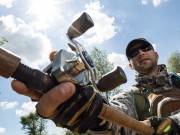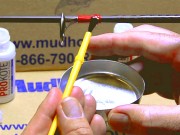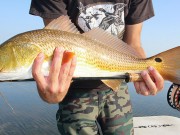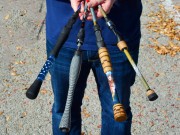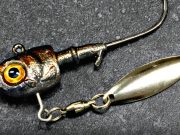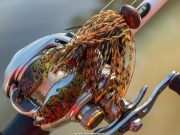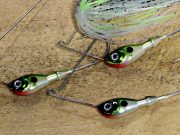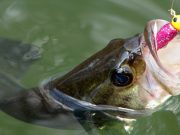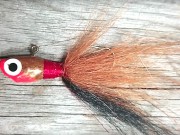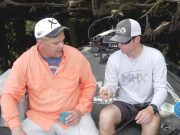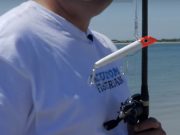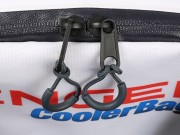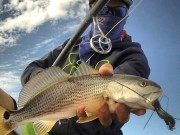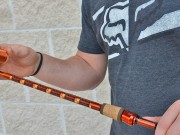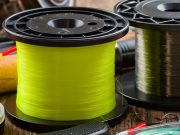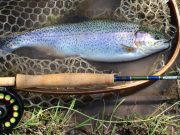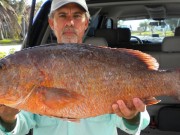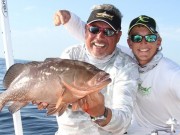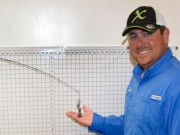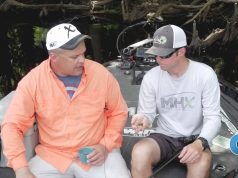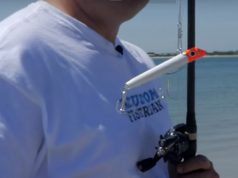Ice fishermen have very unique rod requirements in that they often need to be able to land fish in very tight surroundings. I guess that is another way of saying ice fishermen use really short rods.
So, the first step in deciding what rod you probably should use is to determine what type of fish you are targeting.
For simplicity, this article will assume there are the following types of fish:
Targeting Small Fish: Ranging up to 3 pounds. (Examples: Perch, Crappie, schooling Walleye)
Targeting Medium Fish: Ranging from 3 to 8 pounds. (Examples: Bass, Walleye)
Targeting Large Fish: Anything over 8 pounds. (Examples: Pike, Musky)
We don’t necessarily want to over-simplify the many tactics that reside within each group listed above. However, for the purpose of this article, we wanted to try and provide some general guidelines to follow to give a new rod builder the best chance to decide on a rod that they will be happy with.
With that in mind, here is a breakdown of the key considerations when selecting an ice fishing rod. It really comes down to weighing the pros and cons of each attribute before deciding on your rod.
Fishing Rod Action vs. Power
For those not familiar with rod action vs. power, here is a quick overview. You can also read What Is The Difference Between Fishing Rod Action and Power?
Rod Power
The “power” of a rod refers to how much pressure it takes to flex the rod. Different rod powers are engineered to efficiently handle a certain range of lure weights and line sizes. To select a rod power that will perform best for you, simply narrow your choices to rods designed to cast the weight of lures – and sizes of lines – you’ll fish with most often.
Rod Action
The “action” of a rod is determined by where a rod flexes along the blank. Faster action rods flex mostly near the tip. Moderate action rods flex more near the middle of the blank. Slower action rods flex down into the butt section.
More rod blank characteristics to consider:
Rod Length
The “length” is defined as the measured length from the butt end of the rod – to the end of the rod tip. So if you have a 30 inch ice rod blank, even after you add a butt cap and tip top guide, which may add a bit more overall length, the rod’s action and length are still considered 30 inches.
Selecting An Ice Rod
Here are some recommendations for selecting an ice rod based on the three types of fish we outlined above.
General Options Available
Rod Power: The power rating for ice rods can range from Ultralight to Medium-Heavy.
Rod Action: The action rating for ice rods can range from Extra-Fast to Moderate-Fast.
Rod Length: The length for ice rods generally range from 24 inches to 42 inches
Note: Always check the manufacturer’s rod specifications. The ratings they list often refer to the rod limits, and not averages.
Targeting Small Fish
(Ranging up to 3 pounds)
Rod Power: Rods with an Ultra-Light to Light power rating will probably work well. This gives you enough strength to control the fish, while also allowing enough give to actually enjoy fighting the fish.
Rod Action: Rods with an Extra-Fast to Fast action rating will work well here. Ice fishing bites for small fish, like Crappie, can be quick and then they are gone. This action will allow you take up some line quickly and increase your hook set chances.
Rod Length: For smaller fish there is a wide variety of lengths that will work well. It is really a personal preference as some use shorter rods (like a 24 inch), while others use a longer rod (up to 36 inches).
Targeting Medium Fish
(Ranging from 3 to 8 pounds)
Rod Power: Try using a rod with a Light to Medium-Light power rating. These medium size fish often require a little more backbone built into the rod, and will allow you to control the fight better, particularly when turning the fish’s head around towards the hole.
Rod Action: Generally a Fast action rod will be a good rating choice. It will take up enough line to get a quicker hook set, while also allowing a bit of give to reduce ripping the hook out of the mouth. Cold weather bites can often require a practiced touch to find the right balance.
Rod Length: Consider a rod between 30 inches and 42 inches. If your ice fishing techniques usually produce an occasional larger fish, consider a 36 inch, or maybe even bump up to a 42 inch. If your technique is pretty dialed into a particular range, then you are probably safe with a 30 to 32 inch rod.
Targeting Large Fish
(Anything over 8 pounds)
Rod Power: Larger fish require some more muscle, so consider choosing a rod with a Medium-Heavy power rating. This should provide enough control to land the larger fish, but also be sure to have your reel’s drag tuned to your needs. The right balance between the power of the rod, and the reel’s drag setting, will increase your chances of landing the fish.
Rod Action: A Moderate-Fast action will probably work well here. You want to be able to take up enough line on the hook set, but you want more give in upper part of the rod. With larger fish, a controlled sweeping hook set is often ideal, and the Moderate-Fast action is really perfect for that application.
Rod Length: Most ice fishing rods that have the power and action ratings we mentioned above will come in a 36 inch length. There may be some exceptions of course, but 36 inches will work well.
There you have it. We hope you found this overview of rod blanks for custom ice fishing rods helpful.




